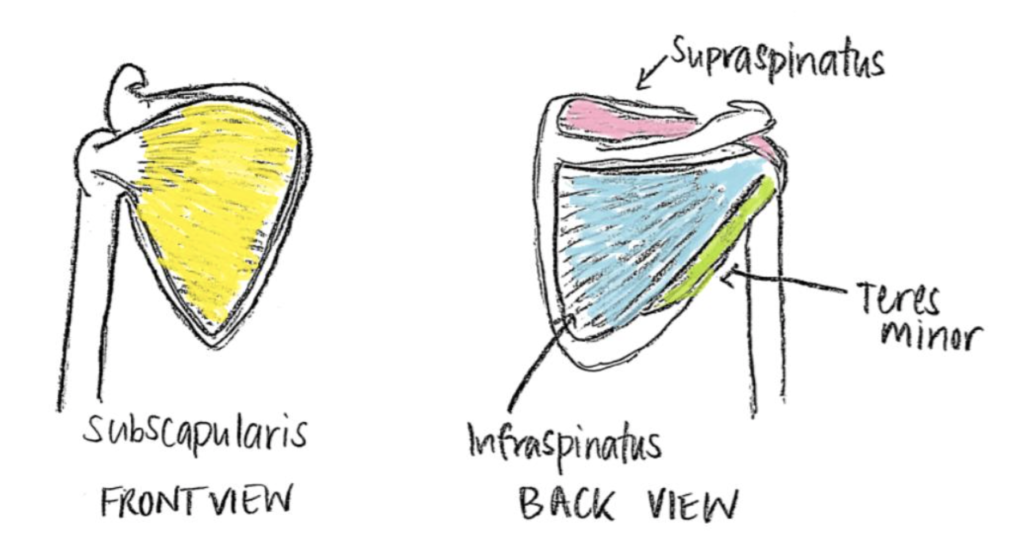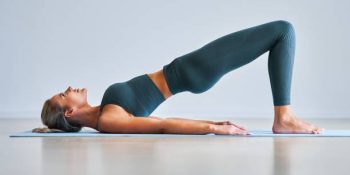
The Rotator Cuff: What is it and why do we care?
September 2, 2022
The rotator cuff is one of the most important groups of muscles in our body, also one of the most commonly mispronounced terms… ‘rotor cuff’ ‘shoulder cuff’ are both pretty commonly used terms to describe these muscles. Our shoulders are the most mobile joints of the body (cool right!) and due to this high level of range of movement we rely heavily on certain muscles to provide stability to our shoulders and allow them to do all sorts of funky and cool movements. …intro the rotator cuff!
The rotator cuff is comprised of 4 muscles which attach over the humeral head to maintain shoulder stability. These muscles include the supraspinatus, infraspinatus, and teres minor, which mainly act to externally rotate the shoulder, along with the subscapularis, which mainly acts to internally rotates the shoulder. The main function of these muscles is to maintain the humeral head into the glenoid fossa (the socket where the head of the humerus is located).
In many individuals, overuse of the rotator cuff through engaging in repetitive movements such as lifting over the shoulder can cause rotator cuff tears, resulting in pain when performing movements such as abducting the shoulder away from the body, as well as, performing movements which cause shoulder rotation such as throwing a ball or wearing a jacket. In addition, rotator cuff tears may also occur when performing uncontrolled movements which may cause accidental injuries.
Common treatment for rotator cuff tears may include acute manual therapy management (aka physio!), however, it is important to implement chronic management strategies through the inclusion of exercise therapy to strengthen the muscles of the rotator cuff, in addition to the surrounding muscles. This is performed by including rotator cuff specific exercises, which target the main muscles and movements, primarily external rotation, internal rotation and abduction of the shoulder joint.
Furthermore, the integration of additional back strengthening exercises such as performing double/single arm rows is imperative in including a more general and holistic approach to enhancing back and shoulder strength. These considerations will help promote an enhancement in overall shoulder health. Some of the main considerations include ensuring that you are performing rotator cuff exercises within a pain free range of motion, to avoid pain during these movements.
Practicing these exercises within a range where there is an absence of pain is beneficial in that the muscles are still being used whilst executing these movements in a safe and controlled manner. Progression of these exercises include increasing the pain free range as tolerated, which may increase through an improvement in rotator cuff strength.
Other News
Why Runners should do Pilates
Why runners should do Pilates? Simple, it will make you a better run...
June 23, 2023
Managing POTS through exercise
Struggling with exercise since being diagnosed with POTS? This one’s for ...
April 24, 2023
Exercise in Stroke Rehabilitation!
Strokes occur when blood supply to your brain is stopped. This can be tempo...
March 10, 2023







